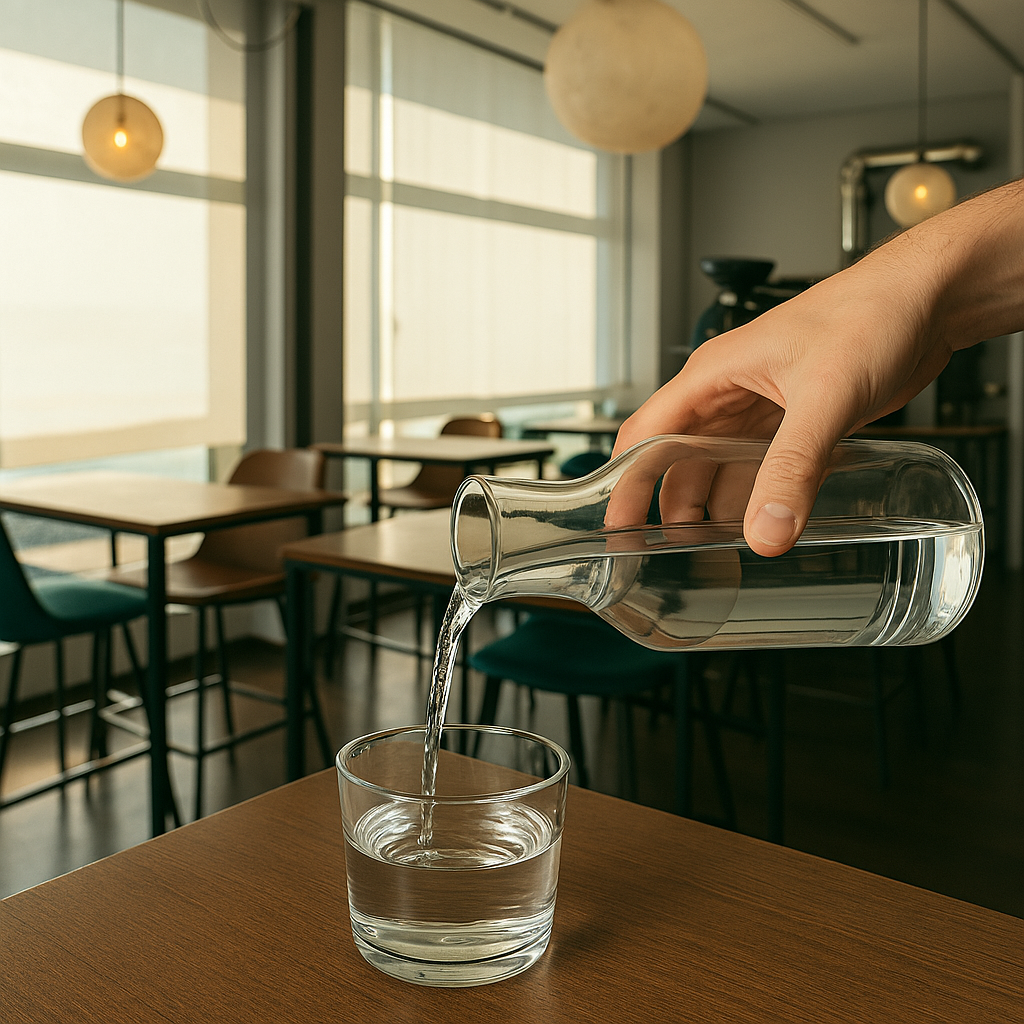
The Invisible Heart of Coffee: Water
Did you know that water makes up up to 98% of your cup of coffee?
Yet, it is one of the most underrated elements in home and professional preparation.
At TomassiCoffee, we know that great extraction comes not only from excellent coffee, but also from precisely calibrated water.
Because water is not neutral: it is active, influential, determining.

Not all waters are the same
Water does more than just soak the coffee.
It is the vehicle through which soluble substances, such as organic acids, sugars, aromatic compounds and lipids, are transferred into the cup. Its mineral composition directly affects the organoleptic profile of coffee: balance, brilliance, sweetness, complexity.
Each dissolved mineral plays a chemical and sensorial role. Their totality, expressed in TDS (Total Dissolved Solids), represents the degree of interaction that water can have with the particles of ground coffee.
Calcium and Magnesium: the two pillars of extraction
The main culprits of water hardness are also the two key ions in extraction.
Calcium (Ca²⁺) structures the cup. It is a stabilizing element that contributes to giving body, fullness and viscosity. It acts above all on the tactile component, enhancing the sensation of cream and density, especially in extractions under pressure.
However, at high concentrations, it can accentuate bitterness and limit brightness, leading to overextraction of acidic compounds.
An ideal concentration is between 10 and 50 mg/L.
Magnesium (Mg²⁺) is an aromatic catalyst. It has a greater affinity with organic compounds and is particularly effective in extracting acids, terpenes and fruity or floral aromas. Its effect on the cup is to increase its complexity, cleanliness and liveliness.
Recommended levels: between 5 and 30 mg/L, with slightly higher dosages for light roast coffees.

Bicarbonates: the buffer between acidity and neutrality
Bicarbonates (HCO₃⁻) perform a buffer function, keeping the pH of the water stable during extraction. They are essential to avoid too sudden changes that would damage the stability of the volatile acids in the coffee.
But here the balance is delicate:
Too many bicarbonates, above 100 mg/L, neutralize the positive acidity and lead to a flat, definitionless cup.
Too few, below 30 mg/L, generate a angular cup with an unbalanced acidity.
The ideal range is between 40 and 75 mg/L: enough to control the pH, but not so much as to stifle the bright notes.
Chlorides, Sulphates and Sodium: the finesse of balance
Other ions, although present in smaller quantities, have a surprising perceptual impact.
Chlorides (Cl⁻) intervene in the perception of sweetness and body. They reduce the harshness and make the cup more rounded and harmonious. They are perfect for improving the structure in coffees that tend to be thin.
Optimal values: between 10 and 30 mg/L. Above 50 mg/L, the sweetness can become excessive and artificial.
Sulphates (SO₄²⁻) enhance the perception of bitterness and the definition of the finish. Useful for balancing blends with a high sugar content or for enhancing notes of cocoa and toast.
Their effect is clear: below 20 or 30 mg/L they give precision; above they risk drying the palate.
Sodium (Na⁺) does not participate directly in extraction, but modulates the taste perception. In low concentrations, below 20 mg/L, it amplifies sweetness and smoothness. In excessive doses, it dampens the aromatic articulation and makes the cup flat.

TDS: the density of water
TDS (Total Dissolved Solids) represents the sum of the salts dissolved in water.
It is a fundamental index for understanding the extraction potential of water.
Below 20 ppm, the water is too pure: the extraction will be partial and the cup weak.
Above 140 ppm, the water is excessively rich in salts: the extraction becomes aggressive, with unwanted bitterness.
The optimal range is between 40 and 120 ppm, where the solvent capacity harmonizes with the sensorial transparency.
Conclusion: Water is a science
In the world of coffee, water is not a simple support. It is an ingredient in its own right, with the power to enhance or compromise every detail of the extraction.
At TomassiCoffee we treat it with the same respect we reserve for our coffees: we analyze it, we filter it, we listen to it.
Because in every cup you prepare there are two voices talking.
The grain tells its origin. The water reveals its soul.
